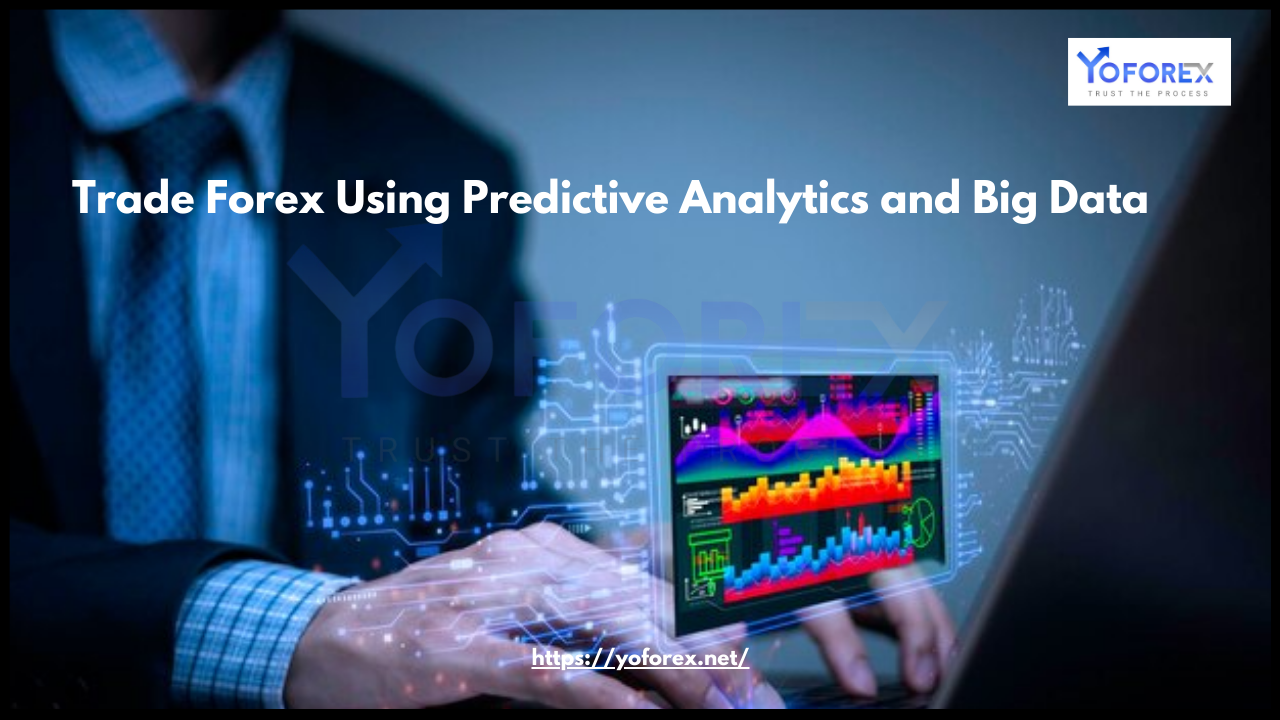Forex trading has evolved significantly with advancements in technology, particularly with the integration of predictive analytics and big data. In today’s fast-paced financial markets, traders need more than just traditional technical and fundamental analysis to gain an edge. The ability to analyze vast amounts of data in real time, identify patterns, and make data-driven predictions can be the difference between profit and loss. This article explores how predictive analytics and big data are revolutionizing forex trading, enabling traders to make informed decisions with higher accuracy.
Understanding Predictive Analytics and Big Data
What is Predictive Analytics?
Predictive analytics involves using statistical algorithms, machine learning techniques, and historical data to forecast future price movements. In forex trading, predictive analytics helps traders identify potential market trends, price reversals, and optimal entry and exit points.
The Role of Big Data in Forex Trading
Big data refers to large and complex datasets that traditional data processing tools cannot handle effectively. In forex trading, big data includes price movements, trading volumes, economic indicators, geopolitical events, social media sentiment, and more. By analyzing these data points, traders can uncover hidden patterns and correlations that impact currency prices.
Benefits of Using Predictive Analytics and Big Data in Forex Trading
- Enhanced Decision-Making
- Traders can use data-driven insights to make more informed decisions rather than relying on intuition or outdated strategies.
- Risk Management
- By analyzing past market behaviors, predictive models help in assessing potential risks, enabling traders to set stop-loss and take-profit levels more effectively.
- Market Trend Identification
- Advanced algorithms can detect emerging trends before they become apparent to the broader market, giving traders a competitive advantage.
- Automated Trading Strategies
- Predictive analytics can be integrated with AI-driven trading bots that execute trades based on real-time data analysis.
- Sentiment Analysis
- By analyzing news articles, social media posts, and financial reports, traders can gauge market sentiment and anticipate price movements.

How Traders Use Predictive Analytics and Big Data
1. Algorithmic Trading
Algorithmic trading (also known as algo-trading) uses predictive models to automate trading decisions. These models analyze historical data, identify profitable trading opportunities, and execute trades within milliseconds, reducing emotional trading errors.
2. Machine Learning in Forex Trading
Machine learning algorithms, such as neural networks and decision trees, learn from historical forex data to improve their predictive capabilities. These models continuously adapt to new market conditions, making them highly effective for forex trading.
3. Economic and Sentiment Analysis
Predictive analytics tools analyze global economic indicators, central bank decisions, and macroeconomic trends to forecast currency price movements. Additionally, sentiment analysis tools process news articles, tweets, and expert opinions to determine market sentiment.
4. High-Frequency Trading (HFT)
Big data is essential for high-frequency trading, where algorithms execute a large number of trades in seconds. These strategies rely on real-time data streams and sophisticated predictive models to capture small price fluctuations for profit.
5. Real-Time Data Analytics
With big data technologies, traders can analyze live market data and make split-second decisions based on real-time insights. This is particularly useful for scalpers and day traders who rely on fast execution.
Challenges and Risks of Using Predictive Analytics in Forex
- Data Accuracy and Reliability
- Inaccurate or outdated data can lead to incorrect predictions and financial losses.
- Overfitting in Machine Learning Models
- Some predictive models may perform well on historical data but fail in real market conditions.
- Market Volatility and Black Swan Events
- Unexpected economic or geopolitical events can render even the most advanced predictive models ineffective.
- Complexity and Cost
- Implementing predictive analytics requires technical expertise and investment in infrastructure, which may not be accessible to all traders.
Future of Forex Trading with Predictive Analytics and Big Data
The future of forex trading is increasingly data-driven. With advancements in AI, machine learning, and quantum computing, predictive analytics will become even more sophisticated. Traders who embrace these technologies will have a significant advantage in identifying profitable opportunities and managing risks effectively.
Additionally, blockchain and decentralized finance (DeFi) could integrate with big data analytics to enhance transparency and efficiency in forex trading. Cloud computing and edge computing will also play a vital role in processing massive data sets quickly and efficiently.
Conclusion
Predictive analytics and big data are transforming the forex trading landscape by providing traders with powerful tools to analyze market trends, mitigate risks, and execute trades with precision. While challenges remain, the benefits of leveraging these technologies far outweigh the risks. As financial markets become more data-driven, traders who harness the power of predictive analytics and big data will be better positioned for success in the competitive world of forex trading.
Stay Updated & Download: https://yoforex.net/trade-forex-using-predictive-analytics-and-big-data/
😎 Happy Trading 😎

